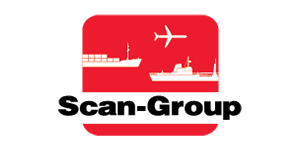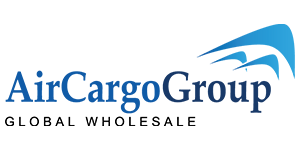
The Meidong container terminal (also referred to as Meishan terminal) in Ningbo was closed on Wednesday after a worker tested positive for COVID-19. There are rising concerns the congestion buildup at China’s second-largest container port of Ningbo would ripple out to other ports.
The main trade focus of Meidong terminal is the Asia-Europe and
Trans-Pacific trades. As of Wednesday, there were 28 container ships at berth and anchored in Ningbo, totaling 186,749 TEU in capacity, according to AIS Live.
“The main issue is if Meishan is closed for some days or one week, there will be a big impact at the other terminals, too,” Mauricio Fisch, director of Ocean Express, a Brazilian forwarder, told JOC.com.
Hapag-Lloyd, Cosco Shipping, OOCL, and Evergreen call at the Meidong terminal, while Maersk, MSC, CMA CGM, Ocean Network Express, HMM, SITC, PIL, and Yang Ming call at the Beilun or Daxie terminals in the Ningbo-Zhoushan port complex that have not been impacted.
Alphaliner noted in its latest weekly newsletter that the container shipping market has been operating at 100 percent utilization levels throughout much of the year. Supply chains are “massively overstrained” and even minor operational problems could quickly spiral out of control and have massive knock-on effects, the analyst said.
“Almost worse than the current delays in Chinese ports are the overarching fears of another major lockdown in China, which would cause utter chaos in the already overstrained supply chains,” Alphaliner warned.
Source: Journal of Commerce
SHIPCO ADVISORY
A COVID-19 case has been reported in Ningbo Meishan Terminal on August 11, 2021. The port was closed and all export/ import services involving Meishan Terminal were suspended. The most immediately affected trade lanes are as follows: to/ from India, Pakistan, Korea, Australia, UK, Ireland, Germany, Netherlands, Scandinavia, Canada, U.S. East Coast, LATAM, etc. Closure of the CFS in Meishan is likely to cause congestion at other CFS facilities in Ningbo. We are expecting a delay with LCL service from/to Ningbo. We continue to closely monitor the situation and will provide updates as they become available.
The month of July marked the biggest monthly increase for long-term contracted rates in the container shipping industry, reports freight rate benchmarking company Xeneta. The latest Long-Term XSI Public Indices recorded the largest ever monthly increase of 28.1% from June to July. The benchmark is 78.2% higher than a year ago and is up 76.4% this year alone.
“This is a truly breath-taking development,” comments Patrik Berglund, CEO of Xeneta. “We’ve seen a combination of high demand, under capacity and supply chain disruption (in part down to COVID and port congestion) driving rates ever higher this year, but nobody could have anticipated a hike of this magnitude. The industry is in overdrive.”
The steep increase in long-term rates follows even greater price hikes in spot container prices. European import spot rates jumped 49.1% in July, to over $13,000 per FEU for Freight All Kinds (FAK), and up 120.3% year-on-year. Asia export rates on the XSI were up 24.2% in July, and 110.4% year-on-year. For U.S. imports, July saw a 17.7% surge in spot rates, up 61.2% over July last year.
Berglund said shippers reported lines were largely honoring long-term contracts. He pointed out that with shippers committing to maximum quantities to secure space, volume flexibility was nonexistent. “Furthermore, all around the world, but especially in the U.S., shippers are playing safe and building buffer agreements to ensure they’re covered for the holiday season. As such a ‘bullwhip effect’ is coming into play, as shippers order more to protect against delayed shipments and rollovers, further disrupting the supply chain,” he added.
Source: Seatrade Maritime News
While air freight rates continue to climb, forwarders are reporting that capacity drops from canceled flights combined with ongoing disruptions in the ocean freight market point to the possibility of a “crazy” air freight market next month.
Bruce Chan, vice president of global logistics at investment bank Stifel told the Baltic Exchange, “We cautioned last month that a cooling in rates was likely to be short-lived and, as we see a re-acceleration, particularly on U.S.-bound routes, that may turn out to be the case. It’s almost silly to think about seasonal patterns in a market as fraught with disruption and chaos as this one, but at the risk of oversimplifying the equation, there are consumption patterns which drive the flow of goods, regardless of this historically unprecedented capacity situation.”
Chan said that apprehensions about a spending shift from good to services in the U.S. end market is “nowhere in sight” with U.S. inventory-to-sales ratios still at record lows. He added, “As high as air freight rates are right now, with detention and demurrage and the risk of stock out, the traditional gap between fully loaded ocean costs and air freight rates may have actually narrowed.”
A Shanghai forwarder told The Loadstar that flights were being canceled due to strict pandemic-related regulations the past two weeks on top of existing capacity shortfalls. The forwarder said, “This has caused a general rate increase, especially since last Monday. This week, rates out of Shanghai are almost stable, but ex-Guangdong and Beijing, they keep going up further. From the second half of August into September, rates are more likely to keep going up – the question is, by how much?”
The Loadstar reports a Singaporean forwarder saying the demand-supply balance may worsen from September, being the traditional peak season for airfreight. With large capacities allocated to big clients, there was little space for ad hoc bookings. A forwarder in Bangladesh said, “Market intelligence also indicates that the air freight market will be more than crazy in September due to the deadlock situation in ocean freight and normal life in U.S. and Europe.”
Source: The Loadstar
Europe’s inland waterways are facing severe congestion following last month’s flood damage and there is concern over the lack of alternative transport routes. Barge operator Contargo’s most recent update reports delays of 43 hours for barge handling into Antwerp port and is averaging 64 hours for Rotterdam port.
The Loadstar heard from a source that the lack of berthing capacity available for freight barge traffic at the ports is the cause of bottlenecks. Additionally, a considerable drop in volumes offered by inland navigation services mean freight movements around Europe are expected to be impacted for some time.
For those seeking alternative routes to market, July floods that brought two months’ worth of rain in 48 hours, are still causing restrictions on certain rail lines.
A source said to The Loadstar that even with rail access hindered in the East of Belgium, France and Luxembourg, they did not expect delays of goods moving by rail to “exceed 24 hours”, but with barge availability declining as congestion mounts, there could be a surge in rail demand.
Source: The Loadstar
The world’s top two ports of Ningbo-Zhoushan and Shanghai handled 1.17bn and 510m tons respectively in 2020. In terms of container throughput, Shanghai is ranked first globally and Ningbo-Zhoushan third.
Maritime consultancy Sea-Intelligence’s assessment of container port congestion at 22 ports around the world show Shanghai and Ningbo facing growing congestion (see Map 1). Among the 22 ports surveyed, only the U.S. ports of Los Angeles, Long Beach, Oakland, Rotterdam (Netherlands), Antwerp (Belgium) and Vietnam had more severe congestion than the two Chinese ports.
“In terms of Ningbo and Shanghai, this might be an early warning of coming impact of more COVID restrictions in China, as the delta variant appears to continue to be present,”
Sea-Intelligence noted in its most recent weekly report.
Newly reported positive coronavirus cases in China have resulted in the re-introduction of restrictions and anti-COVID measures to curb the spread of the delta variant, subsequently lowering productivity levels.
While Ningbo and Shanghai have the greatest number of ships at anchor waiting for berth space, the global container port congestion is worsening according to the map compiled by eeSea for Splash, showing vessel backlogs across five continents (see Map 2).
Container shipping rates from China to U.S. have climbed above US$20,000 per 40-foot container. U.S. retailers are ordering greater quantities of goods than usual as companies enter the year’s peak season, adding strain to global supply chains.
The acceleration in the Delta-variant outbreaks has slowed global container turnaround rates. Typhoons off China’s busy southern coast in late July and early August have also contributed to the crisis being faced by ocean shipping.
“These factors have turned global container shipping into a highly disrupted, under-supplied seller’s market, in which shipping companies can charge four to ten times the normal price to move cargoes,” said managing director Philip Damas of maritime consultancy firm Drewry.
Damas added, “We have not seen this in shipping for more than 30 years,” and said he expected the “extreme rates” to last until Chinese New Year in 2022.
The spot price per container on the China-U.S. East coast route has climbed over 500% from a year ago to $20,804 the past week according to Freightos. That compares to just under $11,000 on July 27.
Source: Reuters












